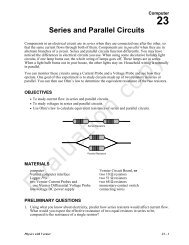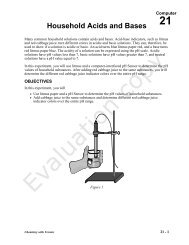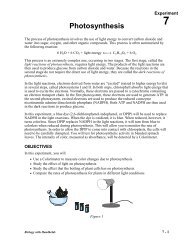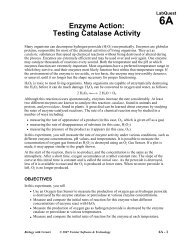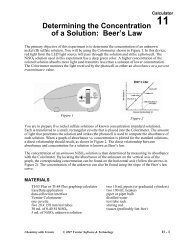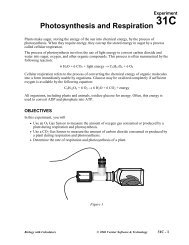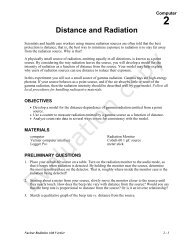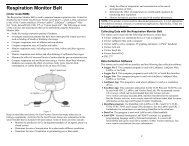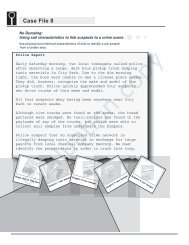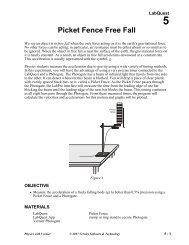Activities for the Wireless Dynamics Sensor System - Vernier ...
Activities for the Wireless Dynamics Sensor System - Vernier ...
Activities for the Wireless Dynamics Sensor System - Vernier ...
You also want an ePaper? Increase the reach of your titles
YUMPU automatically turns print PDFs into web optimized ePapers that Google loves.
<strong>Activities</strong> <strong>for</strong> <strong>the</strong> <strong>Wireless</strong> <strong>Dynamics</strong> <strong>Sensor</strong> <strong>System</strong>Newton’s Second LawHow does a cart change its motion when you push and pull on it? You might think that<strong>the</strong> harder you push on a cart, <strong>the</strong> faster it goes. Is <strong>the</strong> cart’s velocity related to <strong>the</strong> <strong>for</strong>ceyou apply? Or does <strong>the</strong> <strong>for</strong>ce just change <strong>the</strong> velocity? Also, what does <strong>the</strong> mass of <strong>the</strong>cart have to do with how <strong>the</strong> motion changes? We know that it takes a much harder pushto get a heavy cart moving than a lighter one.The WDSS’s <strong>for</strong>ce sensor and x-axis accelerometer will let you measure <strong>the</strong> <strong>for</strong>ce on acart simultaneously with <strong>the</strong> cart’s acceleration. The total mass of <strong>the</strong> cart is easy to varyby adding masses. Using <strong>the</strong>se tools, you can determine how <strong>the</strong> net <strong>for</strong>ce on <strong>the</strong> cart, itsmass, and its acceleration are related. This relationship is Newton’s second law ofmotion.Figure 1 – WDSS on a <strong>Vernier</strong> dynamics cart and trackOBJECTIVESIn this activity, you will• collect <strong>for</strong>ce and acceleration data <strong>for</strong> a cart as it is moved back and <strong>for</strong>th.• compare <strong>for</strong>ce-time and acceleration-time graphs.• analyze a graph of <strong>for</strong>ce vs. acceleration.• determine <strong>the</strong> relationship between <strong>for</strong>ce, mass, and acceleration.MATERIALSBluetooth ® equipped computer<strong>Vernier</strong> <strong>Wireless</strong> <strong>Dynamics</strong> <strong>Sensor</strong> <strong>System</strong>Logger Pro Software<strong>Vernier</strong> <strong>Dynamics</strong> <strong>System</strong>PRELIMINARY QUESTIONS1. When you push on an object, how does <strong>the</strong> magnitude of <strong>the</strong> <strong>for</strong>ce affect its motion?If you push harder, is <strong>the</strong> change in motion smaller or larger? Do you think this is adirect or inverse relationship?2. Assume that you have a bowling ball and a baseball, each suspended from a differentrope. If you hit each of <strong>the</strong>se balls with a full swing of a baseball bat, which ball will© 2007 - <strong>Vernier</strong> Software & Technology 27




